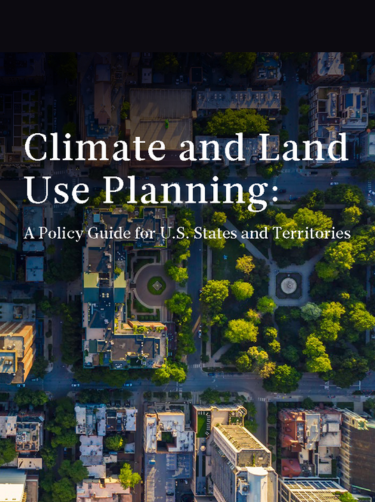Home / Climate and Land Use Planning

Climate and Land Use Planning: A Policy Guide for U.S. States and Territories outlines a suite of policies states and territories can use to advance their climate goals through land use planning, such as location-efficient development policies, climate-resilient development policies, and policies that promote healthy and resilient natural and working lands. It also offers governance strategies to help states undertake cross-sectoral and intergovernmental planning, ensure data-driven planning and decision-making, and foster meaningful engagement with Tribes, communities, businesses, and other stakeholders.
Land use planning — how lands are used and managed — can be a critical tool for states and territories to slash greenhouse gas (GHG) emissions and better prevent, reduce, withstand, and recover from climate-related impacts. Given the complex and interdisciplinary nature of land use policy, the guide highlights three foundational principles for climate-aligned land use planning by states. These include reducing GHG emissions, sequestering carbon, and improving climate resilience; protecting natural and working lands; and transforming systems to build social equity, with a focus on centering communities most vulnerable to climate change impacts.
Importantly, the guide illustrates how effective land use planning strengthens the well-being of communities and ecosystems in addition to addressing climate change. Among the many co-benefits identified are improvements to housing affordability, job accessibility, clean energy siting, clean drinking water, flood and coastal zone management, reduced wildfire risk exposure, access to open space and recreational opportunities, and an increased focus on equity.
Examples of impactful land use policies, practices, and programs across Alliance states and territories are highlighted throughout the guide, including: